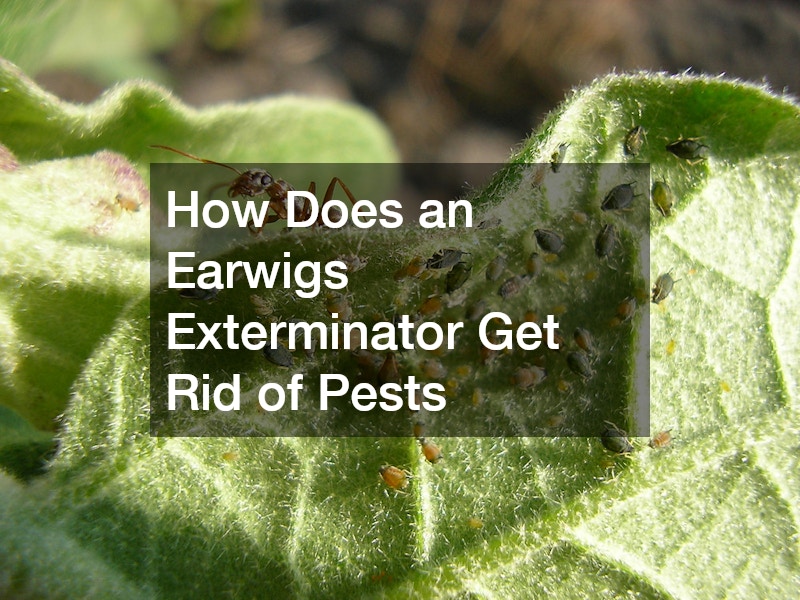Earwigs may seem harmless at first glance, but their presence can quickly become a nuisance for homeowners. Understanding the significance of an earwigs exterminator involves recognizing the potential damage they can cause, as they often seek refuge in moist, dark environments within a home. Professional exterminators play a crucial role in addressing these infestations efficiently, employing a range of techniques to ensure that homes remain earwig-free.
What Methods Do Exterminators Use to Remove Earwigs?
Inspection and Identification
The initial step in effective earwig extermination is performing a thorough inspection of the infested area. Exterminators are trained to recognize subtle signs of earwig activity, identifying both the pests themselves and potential breeding grounds. Accurate identification is vital, as it allows professionals to tailor their treatment plan specifically to the nature of the infestation.
This meticulous approach ensures that no area is overlooked, preventing earwigs from thriving in hidden spots. Professionals often employ specialized tools and knowledge to detect the presence of earwigs, including examining damp areas like basements and bathrooms. By understanding the specific conditions that attract earwigs, exterminators can provide targeted solutions that are both effective and efficient.
Pesticide Application
Exterminators frequently rely on pesticide application as a primary method for eradicating earwig infestations. The use of pesticides is carefully regulated, with professionals selecting products that are effective against earwigs yet safe for humans and pets. These treatments are often applied in areas where earwigs are most likely to congregate, ensuring comprehensive coverage.
Pesticides work by targeting the specific biology of earwigs, disrupting their life cycle and preventing reproduction. Exterminators are trained to use these products judiciously, minimizing the impact on the surrounding environment while maximizing pest control. Proper application techniques ensure that the chemicals reach deep into crevices and other hard-to-reach areas where earwigs hide.
Non-Chemical Methods
In addition to pesticides, exterminators often employ non-chemical methods to manage earwig populations. These alternatives can be equally effective, particularly in cases where chemical use is undesirable. Traps are one such method, capturing earwigs as they move through the home and reducing their numbers naturally.
Another non-chemical strategy involves the use of natural deterrents that exploit earwigs’ aversions. For instance, diatomaceous earth can be spread in areas frequented by earwigs, dehydrating them upon contact. Other natural repellents may include essential oils and other organic compounds known to deter earwigs.
How Do Exterminators Prevent Future Earwig Infestations?
Environmental Modifications
Preventing future earwig infestations often begins with environmental modifications around the home. Exterminators advise removing sources of moisture and organic debris that attract earwigs, such as cluttered gardens and leaky faucets. By recommending changes that reduce favorable living conditions, exterminators help homeowners create an inhospitable environment for these pests.
In addition to removing debris, ensuring proper ventilation in basements and attics can significantly deter earwig habitation. Improving drainage and sealing moisture-prone areas are recommended practices that can further mitigate the presence of earwigs. These proactive measures are essential in maintaining a pest-free environment, aligning with the exterminator’s holistic approach to pest management.
Sealing Entry Points
Another crucial strategy employed by exterminators is the sealing of potential entry points around the home. Through a detailed inspection, they identify cracks, gaps, and other vulnerabilities that earwigs may exploit to gain entry. By sealing these access points, exterminators effectively cut off entry routes, providing a long-term solution to potential infestations.
The process involves using a variety of sealants and barriers tailored to the specific needs of the home. Weatherstripping, caulking, and other materials are employed to secure windowsills, door frames, and foundations. This thorough approach ensures that even the smallest crevices are addressed, significantly reducing the risk of future earwig intrusion.
Regular Monitoring and Maintenance
Ongoing monitoring and maintenance are vital in the prevention of future earwig infestations. Exterminators recommend setting up a schedule for regular inspections to detect early signs of earwig activity. These routine checks help identify potential issues before they become significant, allowing for swift intervention.
During these inspections, exterminators may also provide additional treatments if necessary, ensuring continued protection. They offer tips on maintaining a pest-resistant environment, and advising on landscaping practices that discourage earwig habitation. Additionally, education on recognizing early warning signs empowers homeowners to take proactive steps in maintaining pest control efforts.
In conclusion, effective earwig extermination and prevention hinge on a combination of thorough inspection, strategic treatment, and proactive maintenance. Professional exterminators employ a range of techniques to address current infestations while laying the groundwork for future prevention. Their expertise ensures that homes remain pest-free, providing peace of mind and a healthier living environment for homeowners.
.

